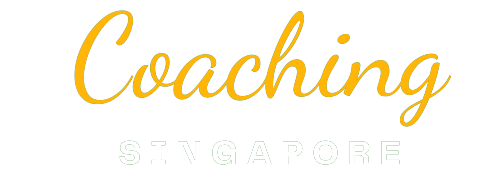Home » Uncategorized » Breath Awareness – Your Secret Superpower
Breath Awareness – Your Secret Superpower

“Feelings come and go like clouds in a windy sky. Conscious breathing is my anchor.” – Thich Nhat Hanh
On any given weekday in Asia, corporate executives move from one Zoom call to another, wolfing down lunch over spreadsheets, barely noticing that they haven’t taken a deep breath all day.
By evening, they slump in their chairs, sighing, “I’m exhausted, but I didn’t even move.”
Here’s the irony: the very thing that fuels your body and brain – the breath – is often the first casualty of stress.
1. Why Leaders Forget to “Breathe”
In leadership coaching, I often begin with a simple question: “When was the last time you noticed your breath?”
Nine out of ten clients pause and chuckle. “Err… probably during my last yoga class,” they say.
Most executives live in a state of “functional breathlessness” – not gasping for air, but breathing shallowly and rapidly, especially under pressure.
When we’re stressed, our sympathetic nervous system kicks in, preparing us for fight, flight, or freeze. It’s useful if you’re being chased by a tiger – not so much if you’re just trying to meet a deadline or give a presentation to the board.
Over time, chronic shallow breathing sends a constant signal of threat to the brain. It narrows attention, heightens anxiety, and drains energy.
It’s like running a marathon while forgetting to refuel.
2. The Hidden Superpower of Breath
Breath awareness isn’t just about relaxation – it’s a performance amplifier.
Your breath is the remote control of your nervous system: it can switch you from chaos to calm, confusion to clarity, fatigue to focus.
In one coaching session, a senior VP I’ll call Janet shared that her temper flared easily during high-stress meetings.
We worked on a 30-second technique: before speaking, she would inhale deeply through the nose for four counts, hold for four, exhale for six, and pause for two.
Within two weeks, she noticed she was “less triggered” and “more thoughtful.”
Her team later told her, “You seem different – calmer, but more assertive.”
Nothing mystical – just the power of oxygen and awareness.
3. Science Backs It Up
Neuroscientists at Stanford University found that slow, deep breathing directly engages the vagus nerve, which activates the body’s relaxation response.
In practical terms:
- It lowers blood pressure.
- Balances heart rate.
- Improves emotional regulation.
- Enhances decision-making under stress.
In 2017, researchers discovered a cluster of neurons in the brainstem – nicknamed the “breathing pacemaker” – that links breath patterns to emotional states.
When we breathe slowly and consciously, we literally calm the brain’s alarm system. So the next time someone tells you to “take a deep breath,” it’s not a cliché – it’s neuroscience.
4. Stories from the Boardroom (and Beyond)
I once worked with a managing director who confessed, “My chest tightens every morning before our executive huddle.”
We designed a “doorway pause” – each time he walked through the office door, he took three slow breaths before greeting anyone.
Within weeks, he reported not only feeling calmer but also noticing his team seemed more relaxed.
He had unconsciously regulated the room through his own breathing.
Another leader shared that she began using box breathing before investor meetings – inhale 4 seconds, hold 4, exhale 4, hold 4.
“It’s like hitting the reset button,” she said. “My voice steadies, my thoughts line up, and I can think clearly even when the questions get tough.”
In both cases, breath became a leadership presence tool – not just personal wellness.
5. Breath Hacks You Can Try Today
Here are a few easy, evidence-based techniques executives can practise anytime, anywhere:
a. The 4-7-8 Reset (for stress relief)
Inhale through the nose for 4 counts
Hold the breath for 7.
Exhale through the mouth for 8.
Do this 3–4 times when anxiety spikes. It lowers cortisol and steadies the heartbeat.
b. Box Breathing (for focus and calm)
Used by Navy SEALs and surgeons.
Inhale 4 – Hold 4 – Exhale 4 – Hold 4.
Repeat for a minute or two before meetings or presentations.
c. Coherent Breathing (for energy balance)
Breathe in for 5 seconds, out for 5 seconds – about 6 breaths per minute.
Do this for 5 minutes during lunch break. It synchronises heart and breath, enhancing focus and mood.
d. The 3-Breath Rule
Before answering an email, starting a meeting, or switching tasks – pause and take three conscious breaths.
You’ll make better decisions and carry less tension into the next moment.
6. Breath in Daily Life: Small Shifts, Big Impact
Morning grounding: Before checking your phone, take 5 deep breaths while stretching. Imagine inhaling clarity and exhaling clutter.
Commute mindfulness: In traffic or on the MRT, match your breath to the train rhythm. Let every stop remind you to exhale tension.
Desk reminder: Stick a note that says “Breathe” on your monitor. Every glance becomes a mini meditation.
Walk and breathe: During lunch, take a short walk and sync your steps to your breath (inhale for 3 steps, exhale for 3).
Before sleep: Practise 4-7-8 or soft belly breathing to wind down. Sleep improves when the nervous system is calm.
7. The Asian Context
In fast-paced cities like Singapore, where “efficiency” often outruns “ease,” many leaders wear stress like a badge of honour.
But success today is not about speed – it’s about sustainable performance.
When you train your breath, you’re training your capacity to respond – not react – to the pressures of modern work.
As one of my clients quipped after a few weeks of practice, “I used to come home wired. Now, my kids say I breathe differently – and that’s saying something.”
8. The Leadership Ripple Effect
Leaders who cultivate breath awareness don’t just improve themselves – they transform their teams. A calm breath signals psychological safety, allowing others to mirror that steadiness. When meetings start with grounded leaders, conversations become more creative and less combative.
In a world buzzing with data and deadlines, your breath is the only constant rhythm you truly own. It’s both ancient and immediate, free and profound.
So the next time you’re rushing between back-to-back calls, pause for just one breath.
Inhale deeply. Exhale slowly. Notice the shift – from chaos to calm, from noise to presence.
Because leadership, at its heart, begins not with the next big strategy – but with the next mindful breath.
Quick Summary: Breath as a Leadership Edge
Goal Technique Duration Best Time
Calm under stress Box Breathing (4-4-4-4) 2 min Before meetings
Restore focus Coherent Breathing (5-5) 5 min Midday slump
Manage emotions 4-7-8 Reset 3 rounds After conflict
Build awareness 3-Breath Rule Anytime Transition moments
Comment: Is there any tip/hack that you have personally used in order to learn things quickly which has not been covered in this blog?
Let me know in the comment section below, I would love to hear your stories.
Share This Post, Choose Your Platform!
Categories
- Mental Resilience
- Emotional Resilience
- Financial Resilience
- Interpersonal Resilience
- Physical Resilience
